Recent research has emphasised the importance of employee engagement, particularly during times of economic uncertainty. In today's rapidly changing business landscape, organisations must adapt quickly to remain competitive. Engaged employees are more likely to be proactive, innovative, and willing to go the extra mile to help their organisation succeed.
The impact employee engagement has on businesses
In the midst of economic instability and the shift towards flexible working, leaders are facing a challenge to enhance productivity within this new work structure while also managing with limited resources. As organisations navigate through this transition period, the ability to maximise output whilst maintaining a balance between efficiency and flexibility is paramount to success.
To comprehend the effect of engagement on businesses, Microsoft studied surveys from over three million employees at 200+ companies in different sectors. Microsoft also examined the collective stock price performance of these companies in 2022.
Stronger financial performance is linked to high employee engagement. Businesses with engaged staff prioritise clear communication and goal setting, along with data-driven feedback to drive continuous improvement.
Employee engagement is a crucial element in driving overall performance within an organisation. It involves feeling a sense of connection and commitment to your role, resulting in increased productivity and job satisfaction. When employees are engaged, they are more likely to go above and beyond in their responsibilities, leading to improved performance outcomes. This in turn fosters a positive work environment and enhances overall organisational success. It is vital for employers to prioritise employee engagement by providing opportunities for development, recognition, and meaningful work experiences. Ultimately, a highly engaged workforce is key to achieving long-term success and growth.
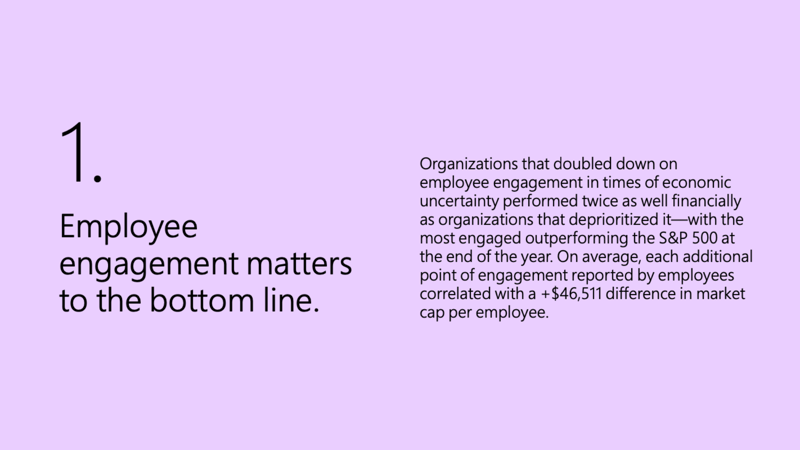
The new business performance equation

Engagement Is Critical to Your Bottom Line
An analysis of the financial performance of companies in 2022 reveals a contrast between those that prioritise employee engagement and those that neglect this crucial aspect of workplace dynamics.
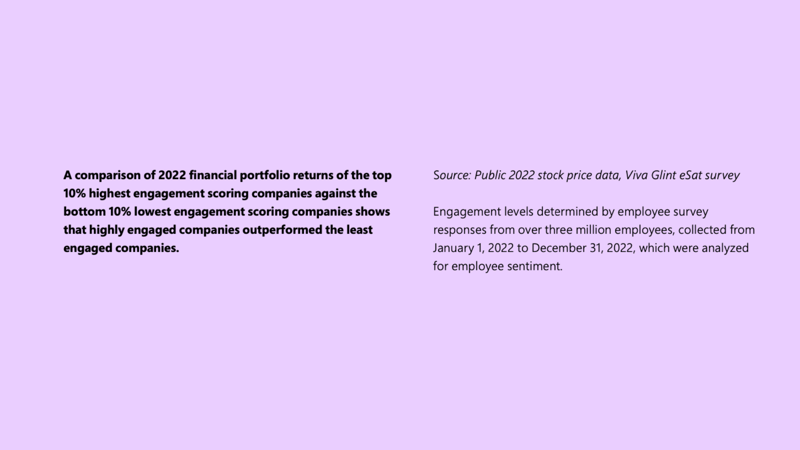
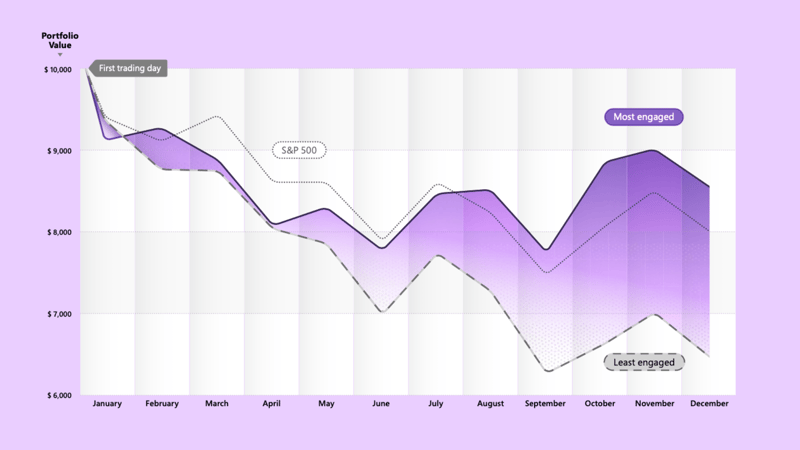
The top 10% of companies with the highest levels of employee engagement demonstrated strategies in nurturing a positive and motivating work environment, which translated into superior portfolio returns. On the other hand, the bottom 10% of companies, plagued by disengaged employees and lacklustre productivity, suffered in comparison to their more engaged counterparts. This highlights the undeniable correlation between employee engagement and overall business success, stressing the importance of implementing effective strategies to boost engagement levels and drive improved performance across all facets of the organisation.
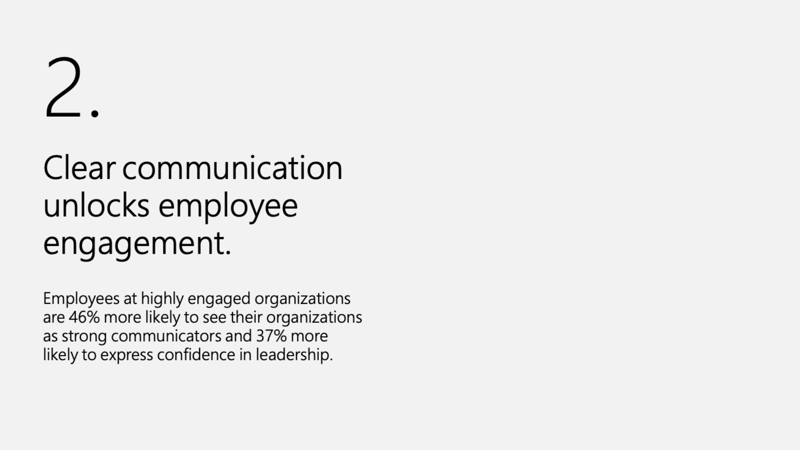
Research shows that in organisations with low engagement levels, as many as one in four employees are uncertain about their priorities. On the contrary, employees in highly engaged teams are 46% more likely to view their organisation as strong communicators, 37% more confident in their leadership, and 16% clearer on their goals compared to those in less engaged teams.
Clear communication plays a vital role in employee retention as well. Individuals who feel their company lacks effective communication are twice as likely to leave their job, highlighting the strong correlation between engagement and performance, digital employee experience, productivity, and employee retention.
Take action:
-
Create clear priorities at the leadership level and set KPIs to help everyone meet clear goals.
-
Equip leaders with modern communication tools that meet employees where they are in the flow of work
-
Use next-generation AI and data-driven analytics to increase the effectiveness of communications.
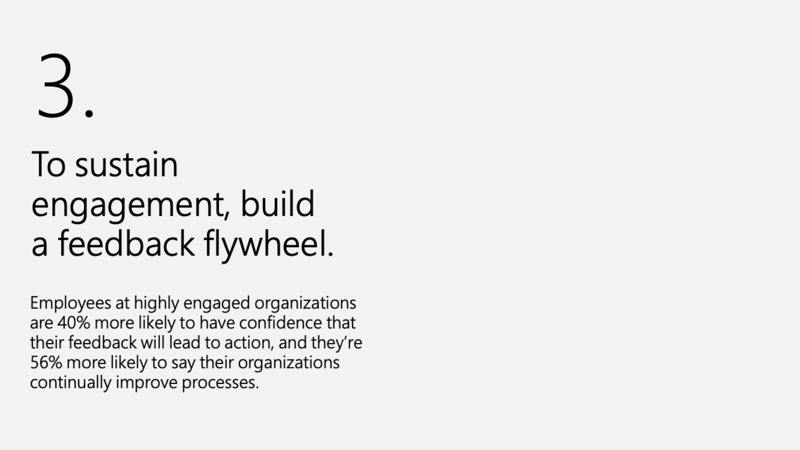
At organisations with low employee engagement, key findings reveal that employees lack confidence that their feedback will be acted upon. Happy employees in highly engaged organisations, on the other hand, are more likely to believe that their diverse perspectives are valued, leading to a more innovative and productive work environment. To boost employee productivity and foster a culture of engagement, it is essential to move beyond traditional feedback systems.
By integrating employee feedback with behavioural data from productivity metrics and collaboration signals, as well as sentiment analysis from communication channels, a "feedback flywheel" can be created. This continuous loop allows for the collection, analysis, and implementation of actionable insights that are communicated back to employees, driving positive change throughout the organisation.
Take action:
-
Make sure your listening strategy is comprehensive—incorporate relevant direct and indirect signals.
-
Leverage AI to analyse the data collected, gain a more thorough understanding of patterns, and accelerate time to action.
-
Empower managers to create their own feedback flywheels to drive meaningful change within their teams, and ensure key metrics are in place to measure impact.
-
Set accountability measures that help employees trust that action will be taken. Be transparent about how feedback will be used, and provide clear next steps
The way forward
As the next generation of AI technology continues to revolutionise the talent landscape and reshape the way we approach workforce skilling, it is becoming increasingly clear that organisations which take decisive action now will emerge as leaders in both the financial and job markets. By implementing effective employee engagement strategies, businesses can enhance their business outcomes and profitability, gaining a competitive advantage in the market. Moreover, by prioritising employee well-being and actively involving them in decision-making processes, companies can also improve customer satisfaction levels and build stronger relationships with their clients.

